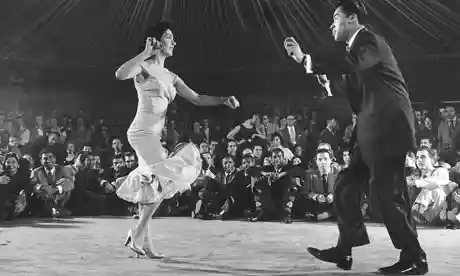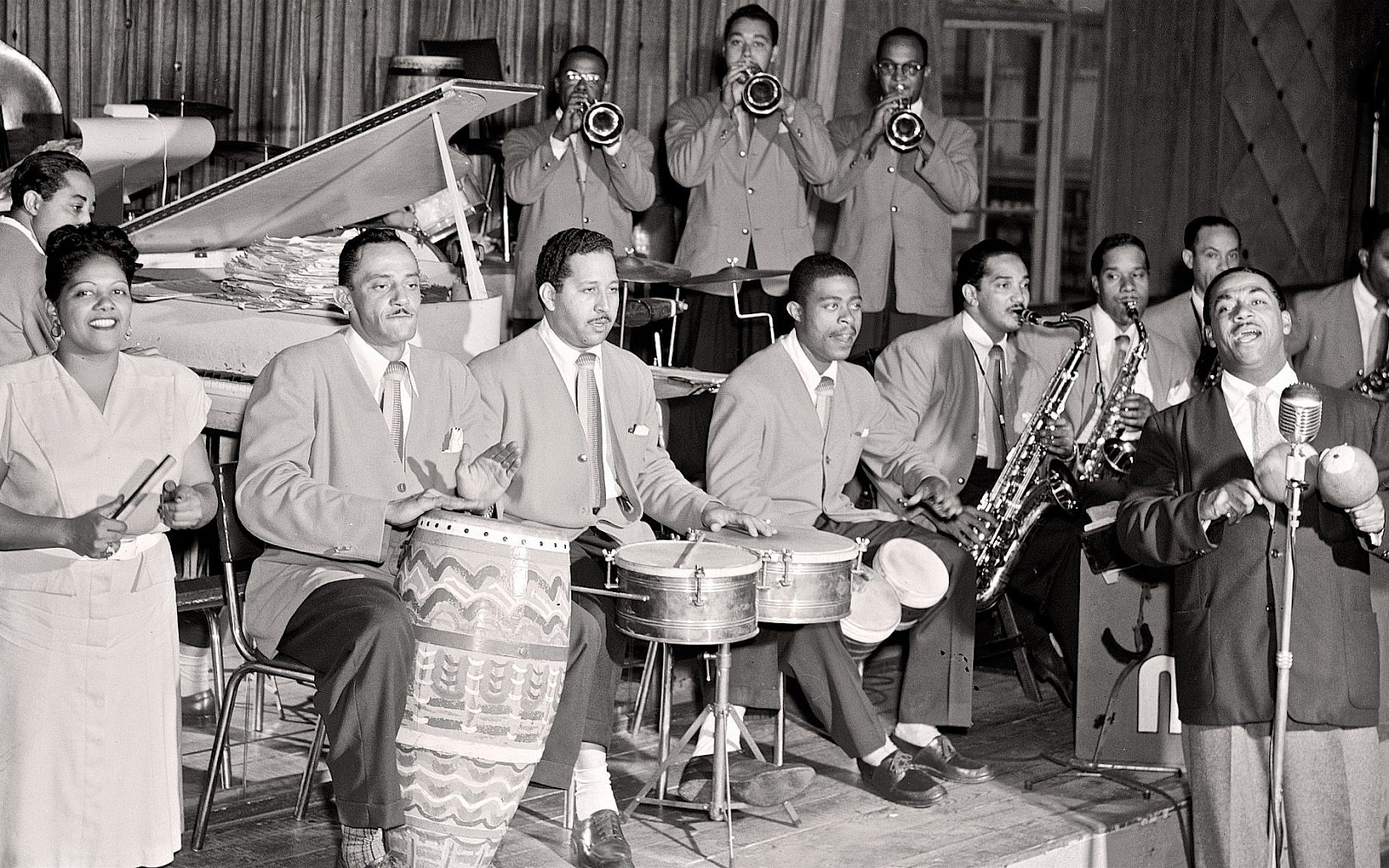Week 3: The Palladium Era
Salsa Rhythms: Musicians, Lyrics, Singers
From all of the material that was provided for this week, I was able to learn all about the different rhythms, musicality, and the inspiring musicians that were present in the Mambo and the Palladium. There are many West African rhythms that were present in Mambo music and that is because of the Africans who moved to Cuba. They brought over music with them, which they created from Yoruba drums. One of the leading cultural inspirations of the mambo genre of music and salsa is the brilliant black composer and instrumentalist by the name of Orestes López. He worked in the leading danzón orchestra of Cuba in the summer of 1939. He suspected that if singing mambos in the Kongo religion of Cuba brought down spirits, then singing mambo from a bandstand might similarly activate a strong and vivid dance reaction. This is precisely what took place, first on the bandstand, and then on the dance floor. It is apparent to see how big of an impact that Orestes López had on salsa and in bringing mambo dance and song into it. He was the leading factor in bringing the mambo section over to Cuba from Africa and leading a whole culture shift that dominated the 50s. Some other notable black composers that followed López's lead are Arsenio Rodríguez and Dámaso Pérez Prado, who were transcribing Orestes's violin riffs to trumpet (Arsenio) or to saxophone (Dámaso).
Culture: Representations in Identity, Geography, Migration, Society
Mambo is mid-century music. It was at its peak from the time of 1949 all the way to 1959, especially in the Americas. Mambo is what bridged the gap from the rise of modern jazz to the rise of rock dancing which was quite prevalent in the spring of 1956. The singing and dancing of what is called the mambo section lives on in venues like Orchard Beach in New York City, or La Conga in Hollywood, as well as just about anywhere in the city of Miami. The places that the dance, song, and culture of mambo traveled to are Havana, Lima in 1951, Mexico City in 1948, and the New York Palladium: the Capital of Mambo in the 1950s. The masters of the Mambo were Cubans as well as Puerto Ricans who had lived in New York for quite some time, and who were bilingual. By 1950, all-out mambo moved from the Park Plaza to the Palladium at Broadway and 53rd.
Personal: Internal Critique, Opinion, and Perspective/Take on the Context
I really enjoyed learning about this week's material learning about the mambo and the Palladium Era. I feel that throughout this week I have learned so much about the song, dance, and culture of the mambo section. I feel that now I can relate so much more to Mambo, as I have learned so much about it from being in this class, and I can now make way more connections to the overarching theme of this class with the salsa dance and culture. Even though I am definitely not a dancer myself, I feel that even I can relate to the Mambo because of how inclusive it is to all different types of people and cultures. I feel that I have learned so much about Mambo from this past week and the material from it. I hope to be able to dive deeper and to learn so much more about Mambo so that I can relate to it even further. I feel as though there is so much history and culture wrapped in Mambo and the Palladium that I would love to learn even more about. I hope that I can experience even more of this super inclusive ad vivid dance and culture in the future.




Comments
Post a Comment